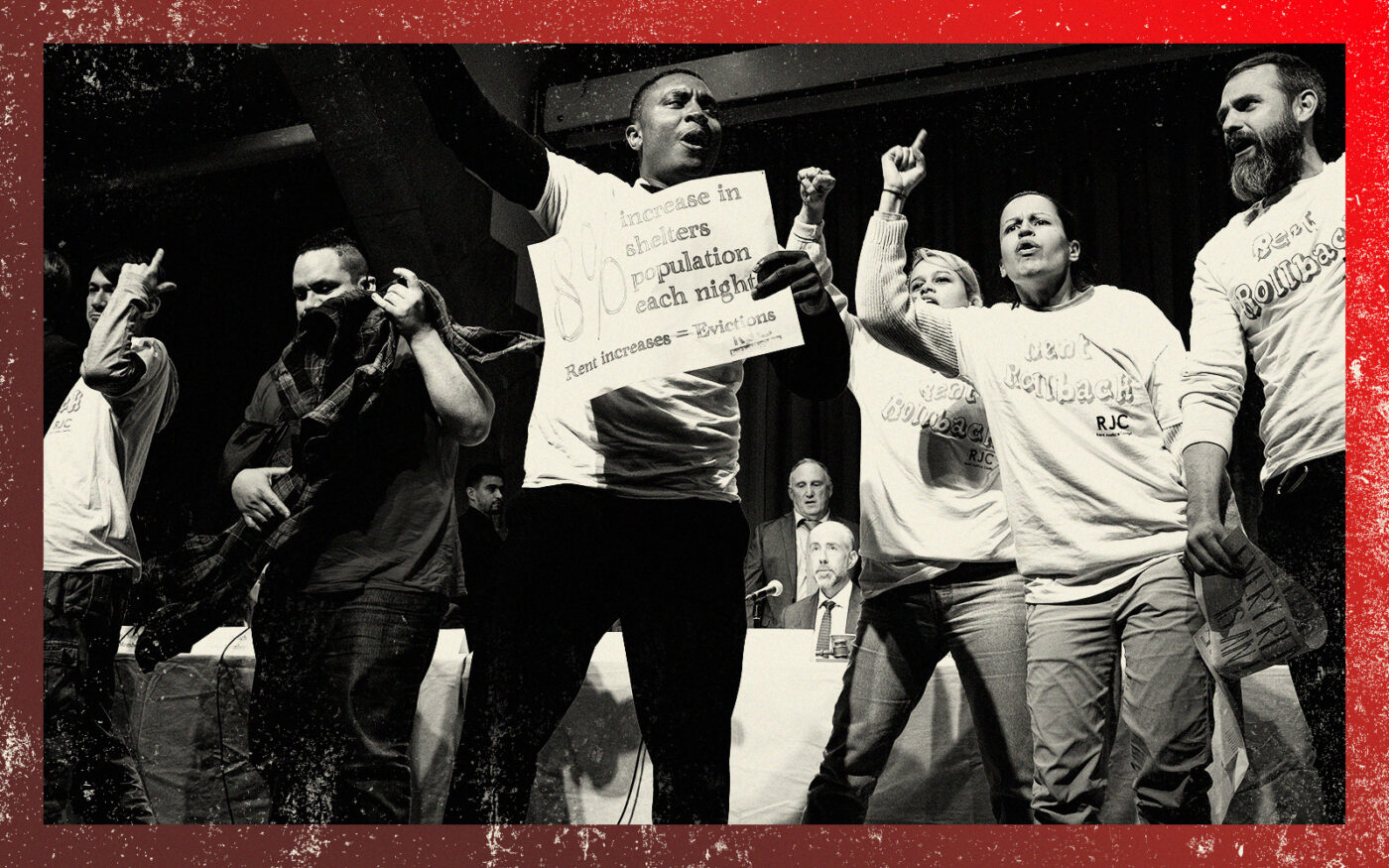Trending
Rent control theater could become true drama
Activists jumped on stage, but Supreme Court could steal the show

Except for better costumes and singing voices, Broadway doesn’t have much on Rent Guidelines Board meetings.
Theatrics at board gatherings are standard fare, but this year activists and City Council members stepped up their quest for a Tony by climbing on the stage, chanting “rent rollback,” and marching around with raised fists and banners to intimidate board members.
With all the histrionics, it’s easy to miss the forest for the trees. Maybe that is the point.
The forest, in this case, is the very concept of rent stabilization in New York, which on Monday was brought to the Supreme Court of the United States. If at least four of the six conservative justices vote to hear landlords’ challenge to the system — there is no chance that any of the three liberal justices will — rent control as we know it would be in jeopardy.
The system’s fans don’t admit to being worried. They note that lower courts have unanimously rejected the landlords’ case and that the Supreme Court has declined to hear similar cases in the past. The court only hears 100 to 150 of the 7,000 or so cases brought before it each year.
But landlord advocates the Rent Stabilization Association and the Community Housing Improvement Program crafted their challenge specifically to appeal to the high court’s conservatives, signaling that the justices could take down rent control not just in New York but elsewhere. The message was, essentially, “This is worth your time.”
Two other challenges brought by landlords target New York’s 2019 rent law, which reduced the financial upside of rent-stabilized buildings — eroding their value and rendering some unprofitable in the short or long term. Those cases could reach the Supreme Court as well.
The question before the court is whether rent control in New York is constitutional or amounts to a “taking” of private property. There’s a lot to unpack, but here are some of the issues:
Owners of rent-stabilized apartments knew they were buying a heavily regulated asset that was subject to laws the state had changed every few years. Landlords cannot expect to have the same control of those units as they would free-market ones.
But must the law offer them the opportunity to achieve a reasonable rate of return? If so, does it offer that? And what is a reasonable return?
What about tenants’ ability to pay? Should that get priority over landlords’ profits? How should the state law and the city’s Rent Guidelines Board balance landlords’ and tenants’ interests?
One problem with rent control is that even if everyone agreed on those answers — which they never will — lawmakers and regulators could still never achieve them. So, two impossible things must happen for this policy to work.
What makes a balance between landlords’ and tenants’ rights unachievable is that the law and the rent board apply uniform rules to a diverse range of properties and tenants. A 4 percent rent increase is unaffordable for some tenants and a rounding error to others. It is enough to sustain some buildings but forces others into an irreversible decline.
No policy is perfect. But you’d be hard-pressed to find another affordable housing program where residents can range from penniless to wealthy and buildings can range from 1 percent to 100 percent affordable.
This happened because rent control didn’t start as an affordable housing program. It was supposed to be a temporary ceiling on rents until the market could absorb all the soldiers returning from World War II. Well, they returned 78 years ago. The rent law is now permanent.
The 2019 version of rent control in New York does have a certain logic to it, however. Rather than limit tenants’ income to ensure the wealthy don’t benefit, it limits rent increases to ensure that landlords won’t invest in their buildings. Consequently, the properties will deteriorate to the point that only impoverished people will be willing to live in them.
Supporters of rent control argue that the government can just enforce the building code to guarantee all apartments remain livable. But passing a code requiring water to flow uphill won’t make it happen. If landlords can only make a profit by neglecting their buildings, that’s what they will do.
This slow-motion train wreck has been playing out for nearly four years.
Low quality of life has, unfortunately, been the city’s de facto affordable housing program throughout its history. The more crime, litter, air pollution, noise, vermin, fast food, run-down stores and low-performing schools a neighborhood has, the cheaper the housing will be.
Any development seen as attracting higher-income residents and fancier restaurants is opposed as gentrifying — even if the vast majority of low-income residents live in rent-stabilized housing, which comes with guaranteed lease renewals that protect them from displacement. This played out in the rezoning of Inwood and failed efforts to rezone Bushwick and the South Bronx.
Housing policy is complex. Laws to prevent displacement, such as good cause eviction, come with their own unintended consequences, and don’t stop the anti-gentrification crowd from opposing new, market-rate housing anyway.
But rent control is not a carefully crafted housing policy. It was a byproduct of world war, gained a political constituency and hardened into permanence. Since then, elected officials have been hammering it into different shapes, trying to achieve a perfect blend of quality and affordability.
Their failure, which was inevitable, could now lead to five Supreme Court justices dismantling some or all of the system. Chanting on a stage is not likely to deter them.




